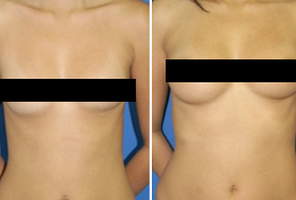Who is a candidate for Vitrase?
Anyone who has recently received hyaluronic acid injections to fill facial wrinkles, sagging skin, or augment areas like lips or cheeks, and is disappointed with the results may want to consider a follow-up procedure with Vitrase. The active ingredient in Vitrase will reverse the effect of cosmetic hyaluronic acid injections from products like Restylane, Juvederm or Prevelle Silk. It can also correct any abnormalities produced as a result of hyaluronic acid filler injections like lumpy areas or overfilling.
What is Vitrase and how does it work?
Vitrase is a propriety formula containing hyaluronidase, a protein enzyme that hydrolyzes or liquefies hyaluronic acid, which is a gel-like substance. By breaking down hyaluronic acid, Vitrase can help to control or alter the effects of any hyaluronic acid-based, cosmetic filler. Vitrase is a dermal injectable made from highly purified ovine hyaluronidase. It has other medical applications in addition to its role in cosmetic filler correction.
What area of the body does Vitrase treat?
Cosmetic correction with Vitrase is generally in the facial area since that is the most common location for hyaluronic acid filler injections. Generally those areas consist of the lips, under the eyes, and anywhere that noticeable wrinkles or folds could benefit from being smoothed out.
How is the Vitrase procedure performed?
The procedure is very similar to that of the original hyaluronic acid filler injection. The area will be thoroughly cleaned and disinfected. Various local anesthetics in the forms of creams or injections are available if needed to reduce discomfort, though not required. The Vitrase will then be injected subcutaneously in the specific locations that require thinning.
What will the results be like?
The results are almost immediate, although the effectiveness of Vitrase continues a little longer. Results are seen in minutes, but may not be fully realized for hours or even days, as swelling continues to subside. The effects of the Vitrase injection are much faster than the natural absorption process that gradually diminishes the fullness of the hyaluronic acid injections over time, which would otherwise take three months or so. Depending on the amount of Vitrase injected, and the number of injection treatments, the fullness of the original hyaluronic acid injections can be partially diminished or removed altogether. Doctors may recommend follow-up injections to further decrease areas of fullness. Follow-up injections are typically spaced a week or so apart.
What is the recovery time?
With no anesthesia or incision sites to heal, recovery time is very rapid. Injection sites are quickly resolved with very little consequence. There may be a brief period of slight sensitivity, redness or swelling that will clear up directly on its own. Having been relieved of overfilling, the treatment area will probably feel even better than it did before the Vitrase injection.
What are the risks?
Unexpected sensitivity to a medication can be a significant problem. Some doctors will perform a skin test to determine any allergic reactions before the procedure. There are also some medications that can interact with Vitrase so your physician should be made fully aware of any and all prescriptions or over-the-counter preparations you may be using. Vitrase is considered a Class C medication because it is not yet known what effect it can have on an unborn child, or a nursing infant. If you are pregnant, plan to become pregnant, or are nursing a baby, notify your doctor in advance of any Vitrase procedure.
Is Vitrase approved for use in the U.S. and covered by insurance companies?
Although Vitrase has been approved for use in the U.S. for quite some time, most insurance companies do not consider it a coverable expense due to its cosmetic nature.
Disclaimer: This information is intended only as an introduction to this procedure. This information should not be used to determine whether you will have the procedure performed nor does it guarantee results of your elective surgery. Further details regarding surgical standards and procedures should be discussed with your physician.
By OnlineSurgery.com Staff
Updated: November 16, 2009

